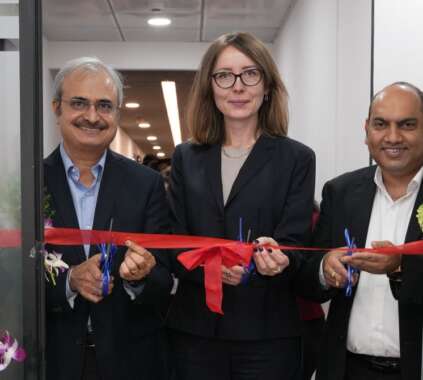A recent survey of one hundred Fortune 500 executives and another hundred Fortune 1000 executives based in US in reveals that an overwhelming majority of executives (99%) agree that work will only become more distributed in the future. The research from Atlassian Corporation found that all large organizations work in a distributed way, whether they have an in-office policy or not. Distributed work is essentially done online by collaborating across locations vs shoulder-to-shoulder.
As per Atlassian’s Team Anywhere policy, employees can choose to work from home, an office, or a combination of both. This approach has been a success as the company is able to attract and retain top talent. Also, the representation of women at Atlassian in India is more than 2x higher now since practicing Team Anywhere. According to 92% of the employees, the company’s distributed work policy allows them to do their best work, and 91% say it’s an important reason why they stay at Atlassian.
Annie Dean, Head of Team Anywhere at Atlassian said, “Atlassian is in the business of unleashing team potential. We want to help teams do distributed work well – and the best way to do that is to live it ourselves. Distributed work isn’t a sacrifice – it’s a huge opportunity for businesses and for people — especially underrepresented groups. We’re finding that teams designed to be distributed are actually figuring out better ways of working.”
“Atlassian is living proof that location flexibility, vibrant offices, and employee engagement can co-exist, even at scale. Our evidence-based approach to distributed work is an opportunity to solve the challenges our customers will face. That’s why we’re so passionate about sharing what we discover – we take what we learn to shape what we build,” she added.
Some of the findings from the survey include:
- According to the report, the biggest blockers to productivity, connection, and innovation are not location-based. 98% of the executives agree that where teams work isn’t the problem, it’s how.
- Only one-third of executives with an in-office policy mandate think that their in-office policies have had any impact on productivity.
- 87% of executives say their teams do not have visibility into each other’s goals. The biggest barriers to collaboration are that employees don’t know who to collaborate with (39%), employees don’t know how to collaborate effectively (38%) and a lack of ownership of tasks (37%).
In addition to the survey findings, the Atlassian report ‘Lessons Learned: 1,000 Days of Distributed at Atlassian’ serves as a playbook that shares Atlassian’s experience on what they’ve learned. There have been some important concerns against remote or distributed work, which tend to be based on feelings and gut reactions. The company has made decisions based on data, and this report addresses each of these challenges mentioned in the summary below:
Distributed challenge 1: Productivity
Atlassians who participated in an experiment where they “timeboxed” their top priorities declined 17% more meetings than usual and spent 13% less time in meetings.
Distributed challenge 2: Connection
Team gatherings increase team connection by 27%, and this boost lasts 4-5 months. New hires and new graduates experience the biggest boosts in team connection following an in-person gathering.
Distributed challenge 3: Offices
Despite Atlassian having no mandates, the company consistently saw 80% of the Atlassians visit an office each quarter.
Atlassians working in India annually save approximately a month, as against the global average of approximately 10 days.
Distributed challenge 4: Culture
As collaboration increasingly happens online, work and how it gets down will become more of a cultural constant than offices.
The report concludes by stating that neglecting to adapt to the distributed new normal is not just a missed opportunity but a detriment to an organization’s ability to harness its full business potential. It’s not rocket science: when teams work smarter, they can achieve more, faster, and with better results.














